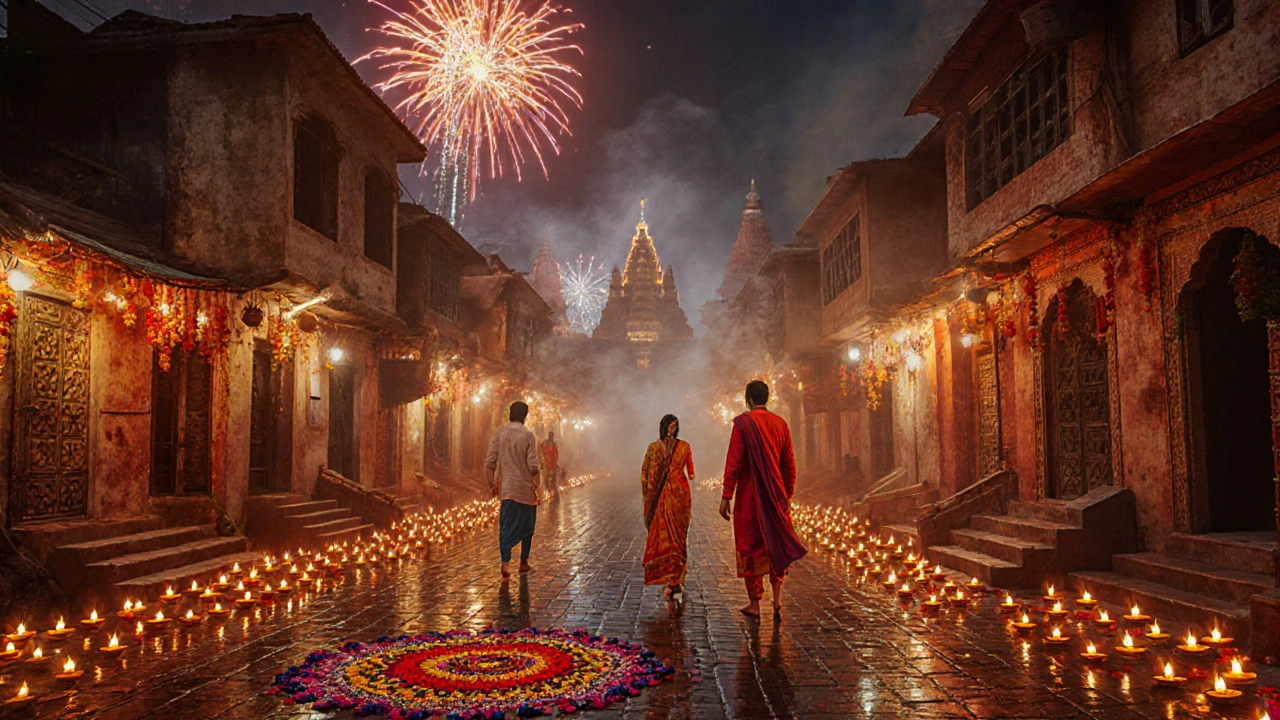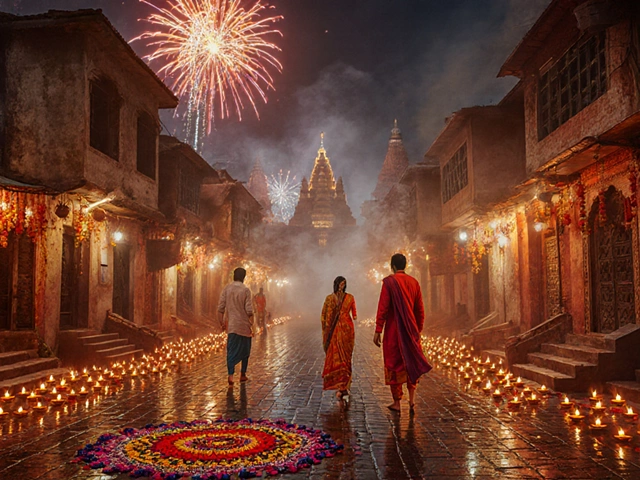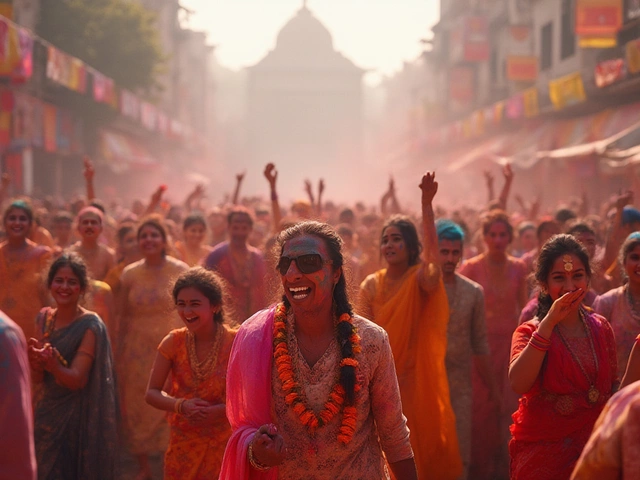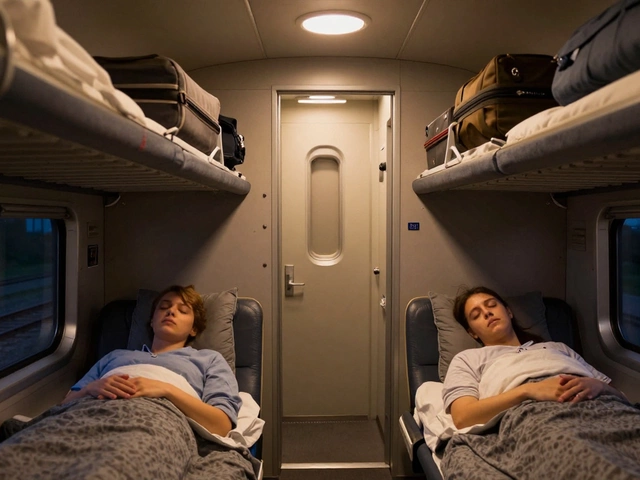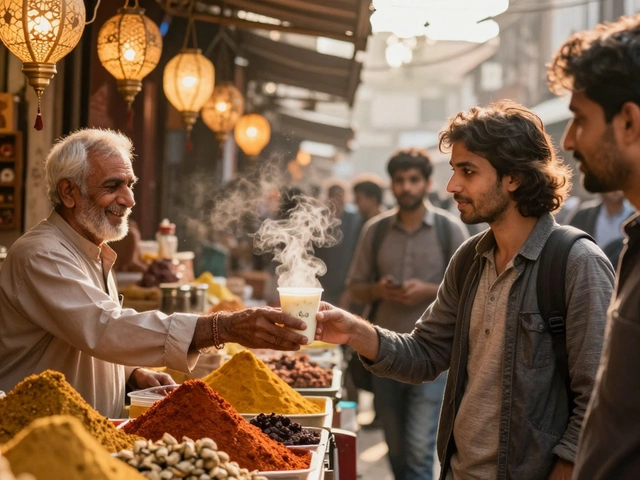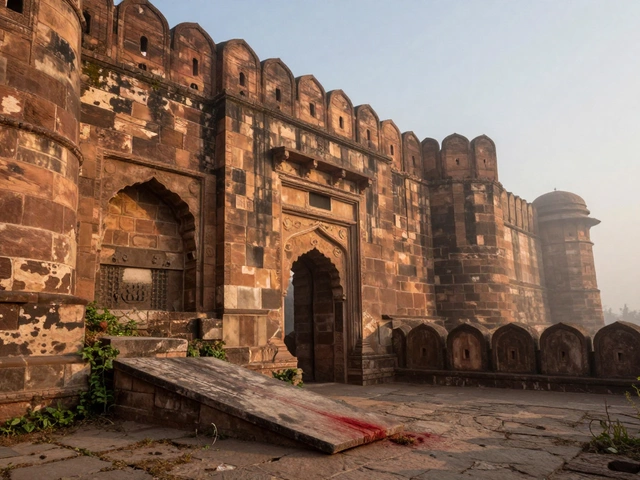Diwali Date Calculator
Find Diwali Dates
Diwali follows the Hindu lunar calendar and typically falls between mid-October and mid-November. Enter a year to see when Diwali will be celebrated.
Diwali Date
Diwali is celebrated on the 15th day of the Hindu lunar month of Kartik, which typically falls between mid-October and mid-November.
Ask any Indian what their favorite festival is, and you’ll get a hundred different answers. But if you ask them to pick the one that stops the whole country in its tracks-where streets glow, homes are cleaned from top to bottom, and even the quietest villages burst into song-you’ll hear one name more than any other: Diwali.
Diwali: The Festival of Lights That Unites a Nation
Diwali, also called Deepavali, isn’t just a holiday. It’s a national reset. For five days in late October or early November, over 1.3 billion people in India-plus millions more across the globe-light oil lamps, burst firecrackers, wear new clothes, and share sweets. It’s not tied to a single religion, though it’s most widely celebrated by Hindus. Jains mark it as the day Mahavira reached nirvana. Sikhs celebrate it as Bandi Chhor Divas, when Guru Hargobind was freed from prison. Even some Buddhists in India observe it. That’s the power of Diwali: it doesn’t divide; it gathers.
The story behind it changes by region. In North India, it’s the return of Lord Rama to Ayodhya after 14 years in exile and his victory over the demon king Ravana. In West Bengal and parts of Eastern India, people are already deep into Durga Puja-worshipping the goddess Durga as she defeats the buffalo demon Mahishasura. But even there, Diwali follows just days later, and families don’t skip it. In Gujarat, it’s the start of the new year. In South India, it’s the day Lord Krishna defeated the demon Narakasura. No matter the tale, the meaning stays the same: light over darkness, knowledge over ignorance, hope over fear.
Why Diwali Feels Different From Other Festivals
Most festivals last a day. Diwali lasts five. Each day has its own rituals, its own energy.
- Day 1 - Dhanteras: People buy gold, utensils, or even new shoes. It’s considered lucky. Stores sell out. In small towns, families queue outside jewelry shops at dawn.
- Day 2 - Chhoti Diwali: Homes are cleaned, walls are painted, and rangoli patterns-colorful designs made with colored powders-are drawn at doorsteps. In rural areas, women spend hours making them with rice flour and flower petals.
- Day 3 - Main Diwali: The night when millions light diyas (clay lamps) and candles. Cities like Varanasi, Jaipur, and Udaipur turn into glowing mosaics. In temples, especially those dedicated to Lakshmi, the goddess of wealth, the crowds are so thick you can’t move. In Varanasi, the ghats along the Ganges are lit with over 100,000 lamps.
- Day 4 - Govardhan Puja: In North India, people build small hills of cow dung or food to honor Krishna’s act of lifting a mountain to protect villagers from storms.
- Day 5 - Bhai Dooj: Sisters pray for their brothers’ long life. Brothers give gifts. It’s like a quieter, more personal version of Valentine’s Day.
This isn’t just ritual. It’s rhythm. The whole country moves to the same beat.
Durga Puja: The Rival That Comes Close
Some might argue Durga Puja is just as beloved-especially in West Bengal, Odisha, Assam, and Tripura. In Kolkata alone, over 10,000 pandals (temporary shrines) are built. Each one is a work of art: some made of bamboo and cloth, others with LED lights, holograms, and even life-sized statues of Bollywood stars or political figures. The streets turn into open-air galleries. People walk for miles just to see them. The final day, Vijayadashami, ends with the immersion of the goddess’s idol in the river. Thousands gather on the banks, singing, crying, clapping. It’s emotional. It’s powerful.
But Durga Puja is regional. Diwali is national. You won’t find a single Indian city-whether it’s Srinagar in the north or Kanyakumari in the south-that doesn’t celebrate Diwali in some form. Even in Muslim-majority neighborhoods, neighbors exchange sweets. In Christian homes, children light sparklers. It’s the one festival that doesn’t ask you to convert to believe in it. It just asks you to light a lamp.
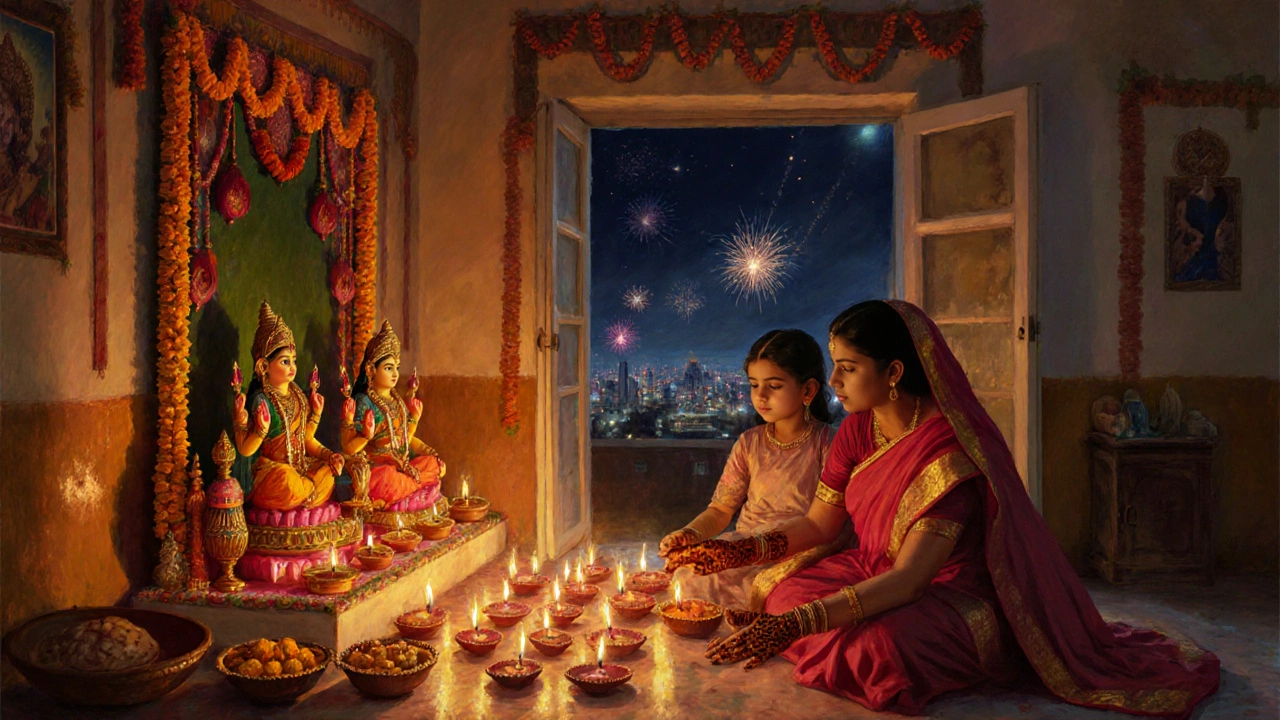
Diwali and Temple Tours in India
If you’re planning a temple tour in India, Diwali is the single best time to witness faith in motion. Temples that are quiet in July become cathedrals of sound and light in October. The Tirupati Balaji Temple in Andhra Pradesh sees over 100,000 visitors a day during Diwali. In Varanasi, the Kashi Vishwanath Temple is packed from dawn till midnight. In Rameswaram, pilgrims walk barefoot along the 1,200-pillared corridor, carrying diyas. The air smells of incense, jasmine, and fried sweets.
But here’s the catch: you need to plan early. Hotels fill up months ahead. Trains to major temple towns sell out. If you want to experience Diwali at a temple, book at least three months in advance. And be ready for crowds. You won’t get quiet contemplation-you’ll get collective joy.
What Makes Diwali More Than a Holiday
It’s not about the fireworks. It’s not even about the sweets. It’s about the act of letting go. Diwali is when people forgive old grudges. It’s when families reunite after years apart. It’s when a shopkeeper in Mumbai gives free sweets to the street vendor who cleans his doorway every morning. It’s when a daughter in Sydney FaceTimes her grandmother in Jaipur just to hear her say, “Light the lamp.”
In a country with 22 official languages and hundreds of dialects, Diwali is the one thing everyone understands. No translation needed. You see it in the eyes of a child holding a sparkler. You feel it in the silence before the first firecracker cracks. You taste it in the first bite of a warm, syrupy jalebi.
Diwali doesn’t just celebrate light. It creates it-inside homes, inside hearts, inside a nation that’s learned, over thousands of years, how to hold onto hope, even when the world feels dark.
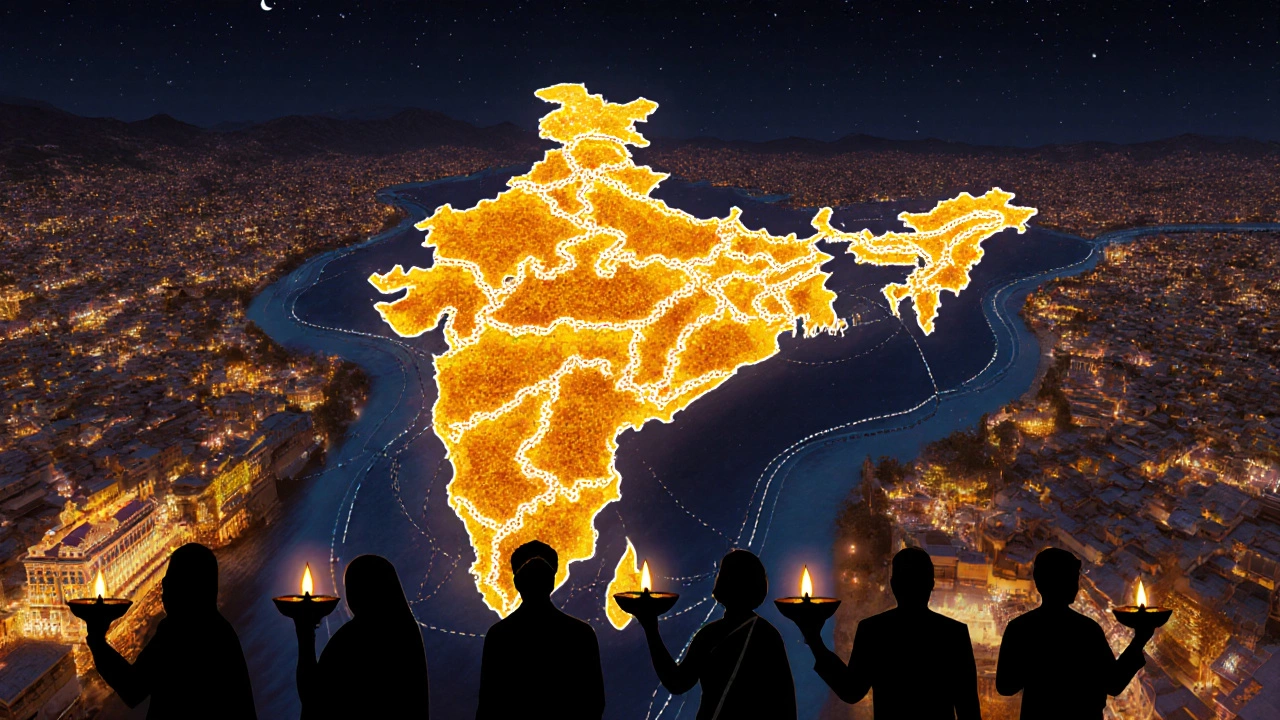
What You’ll See If You Visit India During Diwali
Here’s what actually happens on the ground:
- Streets are closed to traffic in many neighborhoods to make space for processions and community gatherings.
- Public transport runs 24/7 in cities like Delhi, Mumbai, and Kolkata. You can hop on a metro at 2 a.m. and still find people heading home from temple visits.
- Street food stalls sell special Diwali treats: ladoo, barfi, chakli, and gujiya. Prices don’t go up-they get cheaper to share.
- Temples open early and stay open late. Many have free meals for pilgrims. In some, you can light a diya for just ₹10 ($0.12).
- Even the police join in. In Rajasthan, officers wear traditional turbans and hand out sweets to children on patrol.
There’s no other time in India when the country feels so alive, so unified, so deeply human.
Is There a Close Second?
Yes-Holi. The festival of colors. But Holi is loud, messy, and chaotic. Diwali is quiet, reflective, and sacred. Holi is about letting go. Diwali is about beginning again.
And that’s why, for millions, Diwali isn’t just the most beloved festival. It’s the most meaningful.
Why is Diwali called the Festival of Lights?
Diwali is called the Festival of Lights because people light oil lamps (diyas), candles, and decorative lights to symbolize the victory of light over darkness and knowledge over ignorance. The glow represents inner clarity and the removal of spiritual blindness. In cities like Varanasi and Jaipur, entire streets and temples are illuminated with hundreds of thousands of lamps, creating a breathtaking visual effect that’s been described as a sea of stars on earth.
When does Diwali happen each year?
Diwali falls on the 15th day of the Hindu lunar month of Kartik, which usually lands between mid-October and mid-November. In 2025, it will be celebrated on October 28. The exact date changes every year because it follows the lunar calendar, not the Gregorian one. The main night of celebration is the darkest night of the month-the new moon-when the sky is clearest and the lights stand out the most.
Can tourists visit temples during Diwali?
Yes, tourists are welcome at most major temples during Diwali. Places like Tirupati, Kashi Vishwanath, and Rameswaram see huge crowds, but they’re used to visitors. You’ll need to dress modestly, remove your shoes, and follow local customs. Many temples offer free prasad (blessed food) and allow you to light a diya for a small donation. Arrive early to avoid the biggest crowds, and expect long lines at popular sites.
Is Diwali celebrated outside of India?
Yes, Diwali is celebrated by Indian communities in over 150 countries. In Nepal, it’s a national holiday. In Sri Lanka, Malaysia, Singapore, Fiji, and the Caribbean, it’s widely observed. In the U.S., the White House has hosted Diwali receptions since 2003. In Australia, cities like Sydney and Melbourne hold public fireworks and cultural events. It’s one of the most globally recognized Indian festivals.
How is Diwali different from Durga Puja?
Durga Puja is a regional festival centered on worshiping the goddess Durga, mostly celebrated in eastern India, especially West Bengal. It involves elaborate pandals, artistic idols, and community feasts. Diwali is pan-Indian and focuses on light, wealth, and new beginnings. While Durga Puja lasts 10 days and ends with immersion of idols, Diwali is five days of home rituals, lighting lamps, and family gatherings. Many families celebrate both, but Diwali is more universally observed across India’s diverse regions and religions.
What to Do If You Want to Experience Diwali Like a Local
- Stay in a homestay instead of a hotel. You’ll get invited to family rituals and home-cooked meals.
- Learn to say “Shubh Deepavali” - it means “Happy Diwali” in Hindi.
- Don’t buy fireworks. They’re banned in many cities now, and the smoke is terrible. Instead, buy a small clay diya and light it yourself.
- Visit a temple before sunrise on Day 3. The quiet moments before the crowds arrive are the most peaceful.
- Try at least one sweet. Ladoo is the safest bet. If you’re brave, try a spicy chivda mix.
Diwali isn’t something you watch. It’s something you step into. And once you do, you’ll understand why it’s not just India’s most beloved festival-it’s the heartbeat of its soul.
